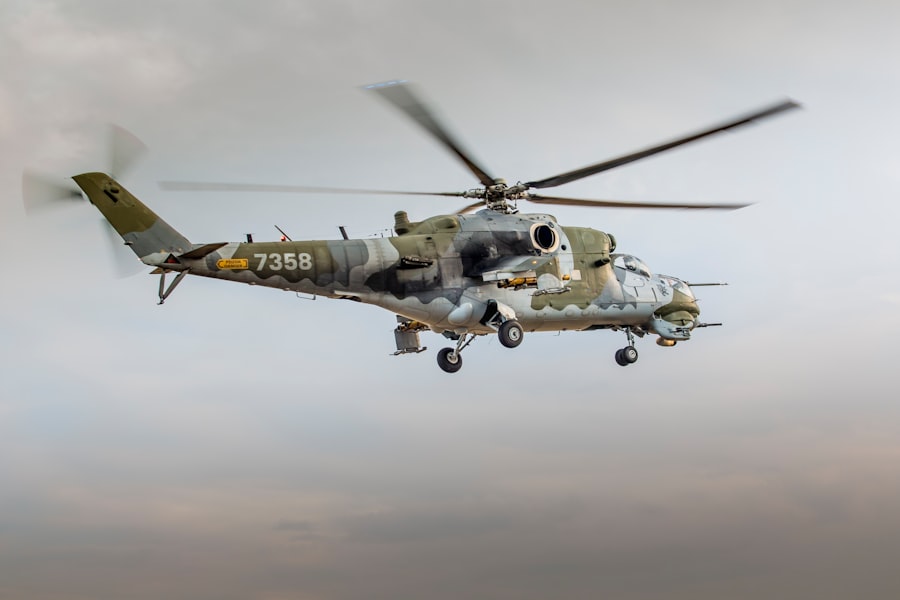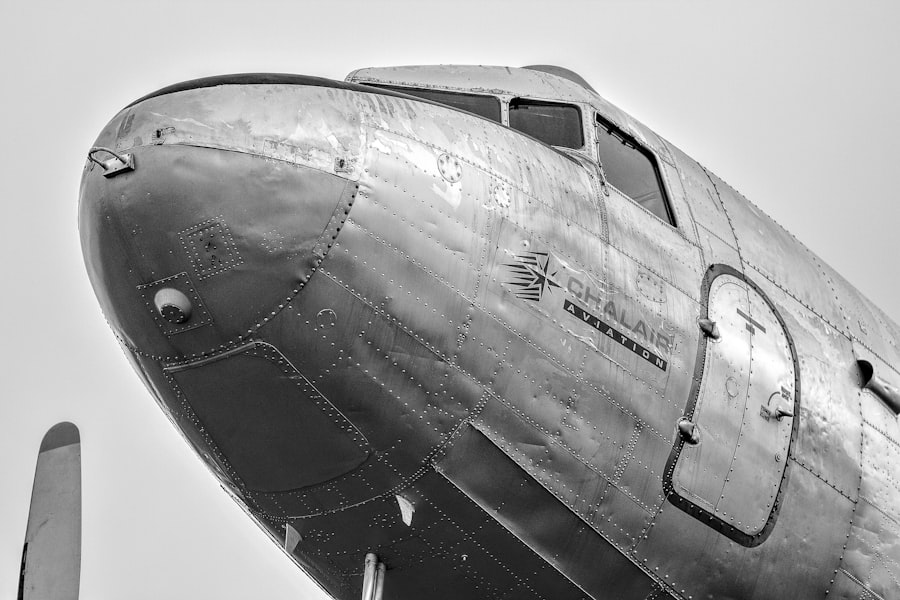
Aircraft structure assemblers play a pivotal role in the aviation industry, contributing significantly to the safety and functionality of aircraft. These skilled professionals are responsible for assembling the various components that make up an aircraft’s structure, including fuselages, wings, and tail sections. Their work is critical not only for the assembly of new aircraft but also for the maintenance and repair of existing ones.
As the aviation sector continues to evolve with advancements in technology and increasing demand for air travel, the role of aircraft structure assemblers becomes even more essential. The profession requires a unique blend of technical skills, attention to detail, and a deep understanding of engineering principles. Aircraft structure assemblers must be adept at interpreting blueprints and technical drawings, as well as using a variety of tools and machinery to ensure that each component is assembled correctly.
The complexity of modern aircraft, which often incorporate advanced materials and technologies, means that assemblers must stay updated on industry standards and practices. This article delves into the job description, required skills, training pathways, career opportunities, work environment, salary expectations, and future trends for aircraft structure assemblers.
Key Takeaways
- Aircraft structure assemblers play a crucial role in the aviation industry by assembling and fabricating parts to build aircraft structures.
- Their job responsibilities include reading and interpreting blueprints, using hand and power tools, and ensuring that the assembled parts meet quality standards and specifications.
- Required skills and qualifications for aircraft structure assemblers include mechanical aptitude, attention to detail, physical strength, and the ability to work in a team.
- Training and education for this role typically includes a high school diploma or equivalent, on-the-job training, and possibly a certification or associate’s degree in a related field.
- Career opportunities for aircraft structure assemblers may include advancement to supervisory or management roles, as well as the potential to specialize in specific aircraft components or systems.
Job Description and Responsibilities
Assembly and Construction
The primary responsibility of an aircraft structure assembler is to construct and assemble the structural components of an aircraft according to precise specifications. This involves working with a range of materials, including aluminum, titanium, and composite materials, which are increasingly used in modern aircraft design due to their lightweight and durable properties.
Quality Control and Inspection
In addition to assembly tasks, aircraft structure assemblers are often involved in quality control processes. They must conduct inspections of their work to identify any defects or inconsistencies that could compromise the integrity of the aircraft. This may involve using specialized tools such as calipers and gauges to measure tolerances and ensure that all components adhere to engineering specifications.
Collaboration and Troubleshooting
Furthermore, assemblers may collaborate closely with engineers and other technicians to troubleshoot issues that arise during the assembly process, making their role integral to the overall success of aircraft production.
Required Skills and Qualifications

To excel as an aircraft structure assembler, individuals must possess a diverse skill set that combines technical knowledge with practical abilities. Proficiency in reading and interpreting technical drawings is essential, as assemblers must understand complex schematics that detail how various components fit together. Additionally, strong mechanical aptitude is crucial; assemblers should be comfortable using hand tools, power tools, and machinery specific to aircraft assembly.
Attention to detail is another vital skill for aircraft structure assemblers. Given the high stakes involved in aviation safety, even minor errors can have significant consequences. Therefore, assemblers must be meticulous in their work, ensuring that every component is installed correctly and meets quality standards.
Furthermore, effective communication skills are important, as assemblers often work as part of a team and must coordinate with other professionals in the assembly line.
Training and Education
| Training and Education Metrics | 2019 | 2020 | 2021 |
|---|---|---|---|
| Number of Training Sessions | 150 | 180 | 200 |
| Training Hours per Employee | 20 | 25 | 30 |
| Employee Satisfaction with Training | 85% | 90% | 92% |
The pathway to becoming an aircraft structure assembler typically begins with a high school diploma or equivalent. However, many employers prefer candidates who have completed post-secondary education in aviation maintenance technology or a related field. Technical schools and community colleges offer programs specifically designed to equip students with the necessary skills for this profession.
These programs often include hands-on training in aircraft assembly techniques, materials science, and safety protocols.
New hires often work under the supervision of experienced professionals who provide guidance on specific assembly processes and techniques.
Many employers also encourage ongoing education and certification through organizations such as the National Center for Aerospace & Transportation Technologies (NCATT) or the Federal Aviation Administration (FAA). These certifications can enhance an assembler’s qualifications and improve their job prospects in a competitive field.
Career Opportunities and Advancement
The career trajectory for aircraft structure assemblers can be quite promising, with opportunities for advancement available as individuals gain experience and expertise. Entry-level positions typically involve basic assembly tasks, but as assemblers develop their skills, they may take on more complex responsibilities or specialize in specific areas such as composite materials or systems integration. With additional training and experience, some assemblers may transition into supervisory roles or become lead technicians overseeing assembly teams.
Moreover, there are opportunities for career growth beyond assembly roles. Some aircraft structure assemblers choose to pursue further education in engineering or management, opening doors to positions such as project managers or aerospace engineers. The aviation industry is vast, encompassing commercial airlines, military aviation, and private aerospace companies; thus, skilled assemblers can find diverse career paths within these sectors.
Work Environment and Conditions

Physical Demands of the Job
Assemblers may spend long hours on their feet, performing repetitive tasks that require physical stamina and dexterity.
Safety Precautions
Safety is paramount in this profession; therefore, assemblers are required to wear personal protective equipment (PPE) such as safety glasses, gloves, and steel-toed boots while on the job. The work environment can also be noisy due to machinery operation, necessitating the use of hearing protection in some cases.
Chemical Exposure and Safety Guidelines
Additionally, assemblers may be exposed to various chemicals used in manufacturing processes, making it essential for them to follow safety guidelines rigorously.
Salary and Benefits
The salary for aircraft structure assemblers can vary significantly based on factors such as experience level, geographic location, and the specific employer. According to data from the Bureau of Labor Statistics (BLS), the median annual wage for aircraft and avionics equipment mechanics and technicians was approximately $66,000 as of May 2022. However, those specializing in structural assembly may earn slightly different wages depending on their skill set and responsibilities.
In addition to competitive salaries, many employers offer comprehensive benefits packages that can include health insurance, retirement plans, paid time off, and opportunities for overtime pay.
These benefits contribute to job satisfaction and can make a significant difference in an assembler’s overall compensation.
Job Outlook and Future Trends
The job outlook for aircraft structure assemblers appears promising as the aviation industry continues to grow. According to projections from the Bureau of Labor Statistics, employment for aircraft and avionics equipment mechanics is expected to increase by about 5% from 2021 to 2031. This growth is driven by factors such as an increase in air travel demand and the need for maintenance on aging aircraft fleets.
Furthermore, advancements in technology are likely to shape the future of this profession. The integration of automation and robotics into manufacturing processes may change how assembly tasks are performed; however, skilled human labor will remain essential for quality control and complex assembly tasks that require critical thinking and problem-solving abilities. As new materials such as advanced composites become more prevalent in aircraft design, assemblers will need to adapt their skills accordingly to work with these innovative materials effectively.
In conclusion, aircraft structure assemblers are integral to the aviation industry’s success, ensuring that aircraft are built safely and efficiently. With a solid foundation of skills and training, these professionals can look forward to a rewarding career filled with opportunities for growth and advancement in a dynamic field that continues to evolve with technological advancements.
If you are interested in learning more about careers in the USA, specifically in the field of aircraft structure assembly and precision, you may want to check out this related article on careersintheusa.com. This article provides valuable information on the job duties, requirements, and potential growth opportunities in this industry. It is a great resource for anyone considering a career in aircraft structure assembly and precision.
FAQs
What is the role of an Aircraft Structure Assembler, Precision?
An Aircraft Structure Assembler, Precision is responsible for assembling, fitting, and installing parts of aircraft, such as wings, fuselage, and stabilizers, using hand tools and power tools.
What are the educational requirements for a career as an Aircraft Structure Assembler, Precision?
Most employers require a high school diploma or equivalent for entry-level positions. Some may also require completion of a formal training program in aircraft assembly or a related field.
What skills are important for a career as an Aircraft Structure Assembler, Precision?
Important skills for this career include attention to detail, manual dexterity, mechanical skills, and the ability to interpret blueprints and technical drawings.
What is the job outlook for Aircraft Structure Assemblers, Precision in the USA?
According to the Bureau of Labor Statistics, the employment of assemblers and fabricators, including Aircraft Structure Assemblers, Precision, is projected to show little or no change from 2020 to 2030.
What is the average salary for Aircraft Structure Assemblers, Precision in the USA?
According to the Bureau of Labor Statistics, the median annual wage for assemblers and fabricators, including Aircraft Structure Assemblers, Precision, was $35,650 in May 2020.



